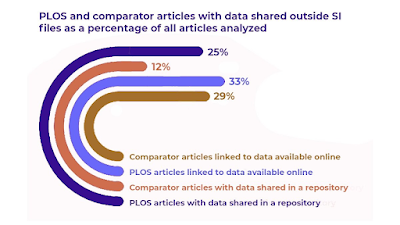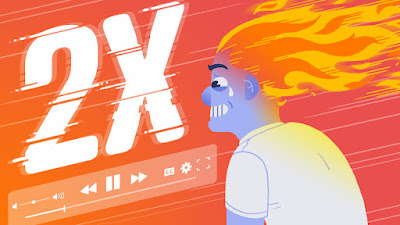In November, Sarah Weirich gave a conference presentation titled, “Managing conference posters: A lifecycle overview from printing service to digital repository discovery.”
Alas, this is a PowerPoint deck, not a poster. But it points to a powerful role for librarians to archive the conference poster output of their university systematically so that posters aren’t just thrown away,
• • • • •
I guess this is a seasonal graph because it’s in the shape of a candy cane? Or maybe it’s a holiday game? “Count all the problems with this graph”?
This is a very complex way of showing four numbers inaccurately.
Hat tip to Carl Bergstrom. I can’t find a link to the original, though.
• • • • •
James Kirchner writes about the typical 2022 conference experience in Nature. Namely, getting sick.
Two days after the conference ended, I tested positive for COVID-19(.) Within 10 days after the event, 28% of respondents came down with COVID-19... I, for one, will be assuming that the risk of getting sick (with COVID-19 or something else) at any large meeting is roughly 20–40%, until I see data that convince me otherwise.
Kirchner says conference organizers should be checking the health of attendees after their conferences and communicating those risks to attendees.
• • • • •
Ferlin and colleagues have an arXiv preprint on at the challenges of online conferences. Posters are part of it, and the authors write that poster sessions in online conferences suffer from two main problems compared to walking around a conference floor:
- Navigation: Finding posters of interest is harder than walking the conference floor.
- Social awkwardness: This is not a comment on the social skills of academics, it’s a comment on the impossibility to skim a poster. Joining a virtual room, looking for a few seconds, then leaving seems more rude than glancing around on a conference floor.
They go on to compare a few different platforms, and offer more thoughts and suggestions!
• • • • •
That’s it for this month and this year!












